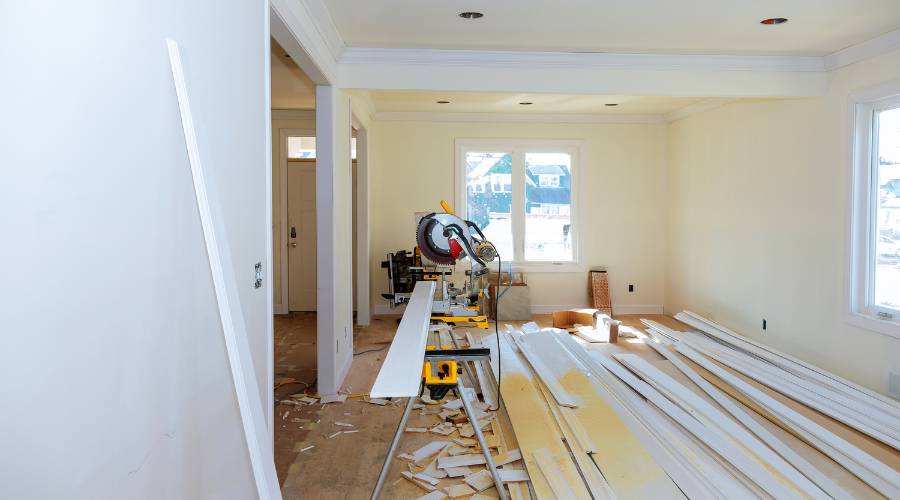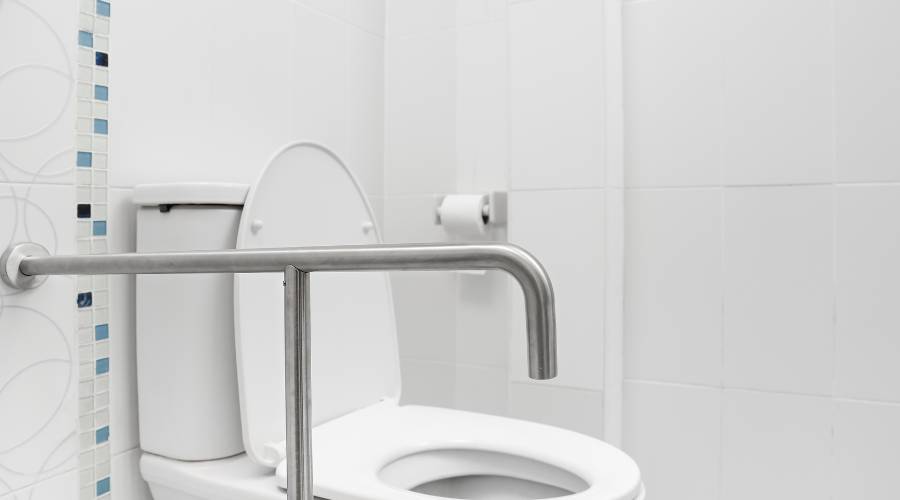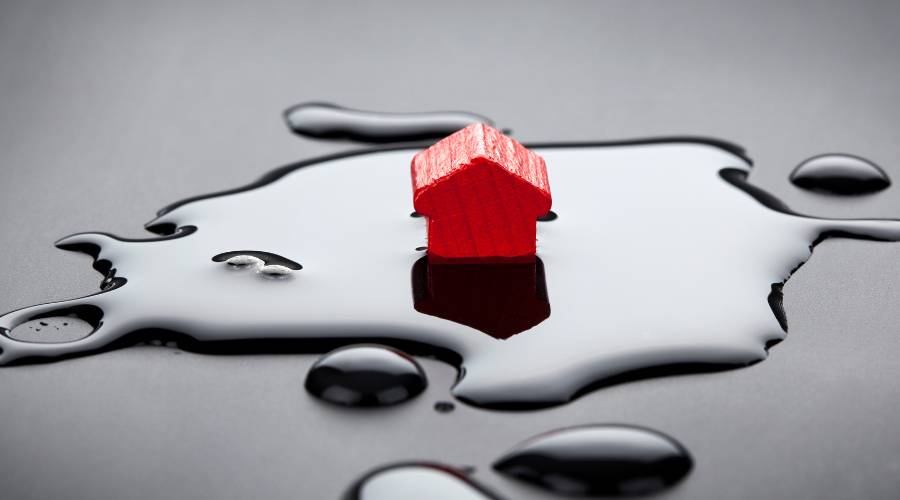Choosing the best materials for flood-prone areas in Australian homes is essential to protect your property and ensure its longevity. Flood damage can result in extensive repairs, significant financial loss, and emotional strain for homeowners. By selecting the right materials, you can mitigate these risks and enhance the resilience of your home.
Floods can cause severe structural damage, lead to mould growth, and compromise the integrity of your property. This makes it critical to invest in materials that can withstand water exposure and recover quickly after flooding events.
Practical building upgrades for flood resilience include using durable, water-resistant materials that are easy to clean and maintain after a flood. These upgrades not only safeguard your property but also contribute to long-term economic savings by reducing repair costs and enhancing the value of your home.
In this article, we will explore the benefits of using flood-resilient materials and provide recommendations from Sydney Renovation Group on the top materials for flood-prone areas. Your home is your sanctuary; ensuring it stands strong against nature’s challenges is our shared goal.

Benefits of Using Flood-Resilient Materials
Choosing the right materials is a smart investment for any property in Sydney’s flood-prone zones. Flood-resilient materials not only shield homes and businesses from water damage, but they also offer lasting value.
Key advantages include:
- Protection Against Repeated Floods: Materials designed for flood resilience—such as non-porous surfaces and corrosion-resistant fixtures—stand up to repeated water exposure. This protection means less worry about structural integrity or costly repairs after each storm.
- Economic Viability: Upfront costs are often offset by significant savings across a building’s lifespan. Homeowners who invest in flood-resilient upgrades typically spend less on emergency repairs, insurance claims, and restoration services.
- Long-Term Cost Savings: Water-resistant flooring, concrete walls, marine plywood, and stainless steel fixtures all maintain their strength and appearance even after flooding events. By minimising the need for frequent replacements or major remediation works, these materials keep maintenance budgets manageable.
- Preservation of Property Value: Properties built with flood resilience in mind tend to retain value better than those repeatedly impacted by water damage. Prospective buyers and tenants recognise the benefit of robust, low-maintenance features.
Sydney’s unpredictable weather patterns mean that preparing for flooding is no longer optional—it’s a wise standard. Selecting proven, durable materials lays the foundation for peace of mind through every rainy season.
Top 4 Materials Recommended by Sydney Renovation Group for Flood-Prone Areas
1. Tile Flooring
Flood-prone homes across Sydney, from leafy Lane Cove to the bustling Inner West, require resilient surfaces that don’t buckle under pressure. Tile flooring stands out as one of the best materials for flood-prone areas, offering both practical and aesthetic advantages. Many homeowners choose tiles not only for their classic look but also because they can withstand repeated exposure to water without warping or degrading.
Key Benefits of Tile Flooring:
- Exceptional Water Resistance: Tiles—especially porcelain and ceramic—are non-porous, making them an ideal barrier against water intrusion. Unlike timber or carpet, tiles don’t absorb moisture, preventing issues like swelling or mould growth after a flood.
- Durability Under Pressure: High-quality tile flooring endures the tough demands of daily life and extreme weather events. Its hard-wearing surface resists scratches and stains, which is particularly important when cleaning up after floods.
- Easy Post-Flood Cleaning: When floodwaters recede, time is critical. Tile flooring allows for the swift removal of debris and contaminants with minimal effort. A mop, mild detergent, and disinfectant solution return most tiled surfaces to their original condition—giving families peace of mind quickly.
- Range of Styles and Finishes: Tiles come in an array of colours, sizes, and textures to suit heritage terraces in Paddington or modern apartments in Chatswood. Homeowners can select slip-resistant finishes for added safety during wet conditions.
Sydney Renovation Group regularly recommends tile flooring for kitchens, bathrooms, laundries, entryways, and even open-plan living areas in flood-prone suburbs. The versatility means you don’t have to compromise on style to achieve practical protection.
With tile flooring as a foundation for resilient design, attention turns next to structural elements that offer superior defence against water ingress.
2. Concrete Walls
Concrete walls offer vital protection for homes situated in flood-prone areas. These robust structures provide exceptional durability and strength, making them a reliable choice to withstand the harsh impacts of flooding.
Structural advantages of concrete walls include:
- High resistance to water infiltration: Concrete’s dense composition prevents water from seeping through, reducing the risk of internal damage.
- Enhanced stability: Able to withstand high-pressure conditions during floods, concrete walls maintain their integrity even under severe stress.
Concrete walls play a significant role in minimising water damage during floods. Their ability to withstand prolonged exposure to water ensures that homes remain structurally sound, preventing costly repairs and ensuring safety for occupants.
When considering the best materials for homes in flood-prone areas, concrete walls stand out due to their unparalleled resilience and protective properties. For homeowners aiming to safeguard their properties against floods, investing in concrete wall construction is a practical and effective solution.
3. Marine Plywood
When it comes to flood-prone areas, marine plywood stands out as an exceptional material due to its unique characteristics. Unlike regular plywood, marine ply is specifically designed to withstand moisture and damp conditions, making it one of the best materials for flood resilience.
Key characteristics of marine plywood include:
- Water-resistant properties: Marine ply is treated with waterproof glue that holds the layers together, ensuring minimal water absorption. This property makes it ideal for areas that frequently experience flooding.
- Durability: Its construction involves multiple layers of wood veneer bonded together with strong adhesive, which provides excellent strength and resistance to delamination even in wet conditions.
In flood-prone areas, marine plywood can be used effectively in various applications:
- Flooring: Particularly in basements or ground-level rooms where water ingress is a concern.
- Wall panelling: To provide an additional layer of protection against water damage.
- Furniture and cabinetry: Ensuring that essential home fixtures remain intact and functional after a flood event.
Choosing marine ply, along with other materials like tile flooring, concrete walls, and stainless fixtures, can significantly enhance the resilience of homes located in flood-prone areas.
4. Stainless Fixtures
Benefits of stainless fixtures in flood-prone areas:
Stainless fixtures offer significant advantages for homes located in flood-prone areas. Their robust and resilient nature makes them an ideal choice to withstand the challenges posed by frequent water exposure.
Corrosion resistance and durability of stainless fixtures:
One of the standout features of stainless fixtures is their exceptional corrosion resistance. Unlike other materials that may rust or deteriorate quickly when exposed to moisture, stainless steel remains unaffected, maintaining its structural integrity and aesthetic appeal. This durability ensures that these fixtures can endure the harsh conditions typical of flood-prone environments.
Longevity in wet environments:
The longevity of stainless fixtures in wet environments is another compelling reason for their use in flood-prone areas. Whether it’s kitchen fittings, bathroom accessories, or outdoor structures, stainless steel provides a reliable solution that won’t succumb to the wear and tear caused by continuous exposure to water. This longevity not only reduces maintenance costs but also provides peace of mind for homeowners investing in durable solutions for flood resilience.
Incorporating materials like tile flooring, concrete walls, marine ply, and stainless fixtures can significantly enhance the flood resilience of your home.

Incorporating Flood-Resilient Features with Professional Help
Selecting the right materials is only part of the journey toward effective home protection in flood-prone areas. The expertise of licensed builders and architects brings an extra layer of assurance, ensuring that every aspect of your renovation is tailored for maximum resilience and safety.
Why Professional Guidance Matters
- Customised Solutions: Every Sydney home or commercial site has unique structural characteristics and risk factors. Licensed builders carry the knowledge to assess vulnerabilities and recommend upgrades that work for your property’s specific needs.
- Architects’ Insight: An architect’s consultation can reveal design opportunities to better channel water away from living spaces, elevate critical infrastructure, or incorporate innovative drainage systems, all while preserving the aesthetics of your home.
- Regulatory Compliance: Flood-prone areas in NSW often come with strict building codes. Professionals keep projects compliant with local council requirements and insurance guidelines, reducing future headaches.
- Future-Proofing: Builders experienced with flood-resilient renovations can source proven materials, such as marine plywood or stainless fixtures, and integrate them seamlessly, boosting durability and minimising disruption during future flood events.
By working closely with trusted professionals, homeowners gain peace of mind knowing that their upgrades are not just visually appealing but engineered for real-life challenges that Sydney weather can bring. This approach transforms a renovation from a routine project into a strategic investment in long-term safety and value.
Conclusion
Selecting the best materials for flood-prone areas is crucial in safeguarding your home against the damaging effects of floods. By choosing flood-resilient materials, homeowners can significantly reduce the risk and impact of water damage, ensuring their properties remain safe and functional during adverse conditions.
Engaging with licensed builders and architects provides valuable expertise in integrating these materials effectively. Professional assistance ensures that every aspect of the renovation aligns with flood resilience principles, delivering long-term protection and peace of mind.
Key Takeaways:
- Durable Materials: Tile flooring, concrete walls, marine plywood, and stainless fixtures offer robust defences against flooding.
- Economic Benefits: Investing in flood-resilient upgrades can save homeowners from costly repairs and replacements.
- Professional Guidance: Consulting experts guarantee that flood protection measures are correctly implemented.
For residents across Sydney’s North Shore, Inner West, and Eastern Suburbs, embracing these solutions means creating homes that withstand the challenges posed by floods. Prioritising flood resilience not only preserves property value but also enhances safety and well-being for all occupants.
Choosing the right materials and professional guidance positions you as a proactive homeowner committed to protecting your investment and ensuring a secure living environment.
Why is it important to select the right materials for flood-prone areas in Australian homes?
Selecting the right materials for flood-prone areas in Australian homes is crucial because it enhances flood resilience, minimizes water damage, and protects property value. Using appropriate materials helps reduce repair costs and ensures long-term durability against flood impacts.
What are the economic benefits of using flood-resilient materials in construction and renovation projects?
Using flood-resilient materials offers significant economic benefits, including long-term cost savings by reducing damage repair expenses, improving property longevity, and increasing home value. Investing in these materials makes construction and renovation projects more economically viable in flood-prone regions.
What are the top four materials recommended by Sydney Renovation Group for homes in flood-prone areas?
The Sydney Renovation Group recommends tile flooring, concrete walls, marine plywood, and stainless fixtures as the best materials for homes located in flood-prone areas due to their durability, water resistance, and ease of maintenance after flooding.
How does tile flooring benefit homes located in flood-prone areas?
Tile flooring benefits homes in flood-prone areas by offering excellent durability and water resistance. It is easy to clean after flooding events, helping to prevent mold growth and structural damage, making it an ideal flooring choice for such environments.
What role do concrete walls play in enhancing flood protection for residential buildings?
Concrete walls provide structural strength and act as a barrier to minimize water intrusion during floods. Their robustness helps protect the integrity of buildings in flood-prone areas, reducing potential water damage significantly.
Why is professional consultation important when incorporating flood-resilient features into homes?
Consulting licensed builders and architects is essential when adding flood-resilient features because they ensure that the design and material selection meet safety standards and local regulations. Professional guidance maximizes home protection effectiveness against floods while optimizing construction quality.





